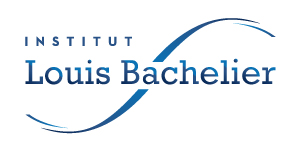Output-based allocations (OBAs) are typically used in emission trading schemes to mitigate leakage in sectors at risk. Recent work has shown they may also help to stabilize prices in markets subject to supply and demand shocks. We extend previous work to simultaneously include both leakage and volatility.
The paper studies pollution permit markets in which a fraction of permits are allocated to firms based on their output. Output-based allocations, which are receiving increasing attention in the design of carbon markets around the world are shown to be optimal under demand and supply volatility despite the output distortions they may create.
We examine to which extent the Keen model (Keen 1995) is a faithful modelling of Minsky’s Finance. We conclude that the Keen crisis has few Minskian flavours.
The consumption of mineral resources and energy has increased exponentially over the last 100 years. Further growth is expected until at least the middle of the 21st century. In order to meet this demand, more metals will have to be produced by 2050 than over the last 100 years, which raises questions about the sustainability and conditions of supply.
Realised with Jean-Pierre Ponssard, this “Cahier de l’ILB” is dedicated to sustainable mobility. It deals with various subjects : how driving restrictions affect urban pollution, carbon footprint of motor vehicles in the United States, hydrogen vehicles, the importance of strong regulation to reap the full benefits of innovation in mobility.
Social pressure can help overcome the free rider problem associated with public good provision. In the social norms literature concerned with the private provision of public goods there seems to be an implicit belief that it is best to have all agents adhere to the ‘good’ social norm. We challenge this view and study optimal government policy in a reference model (Rege, 2004) of public good provision and social approval in a dynamic setting.
This study uses the global climate–economy–biosphere (CoCEB) model formulated in Part 1 to investigate economic aspects of deforestation control and carbon sequestration in forests, as well as the efficiency of carbon capture and storage (CCS) technologies as policy measures for climate change mitigation.
We consider the problem of stopping a diffusion process with a payoff functional involving probability distortion. We study stopping decisions of naïve agents who reoptimize continuously in time, as well as equilibrium strategies of sophisticated agents who anticipate but lack control over their future selves’ behaviors.
Article published in Environmental and Resource Economics – September 2017 Abstract. We consider a partial equilibrium model to study the optimal phasing out of...
Common dynamical properties of business cycle fluctuations are studied in a sample of more than 100 countries that represent economic regions from all around the world.


